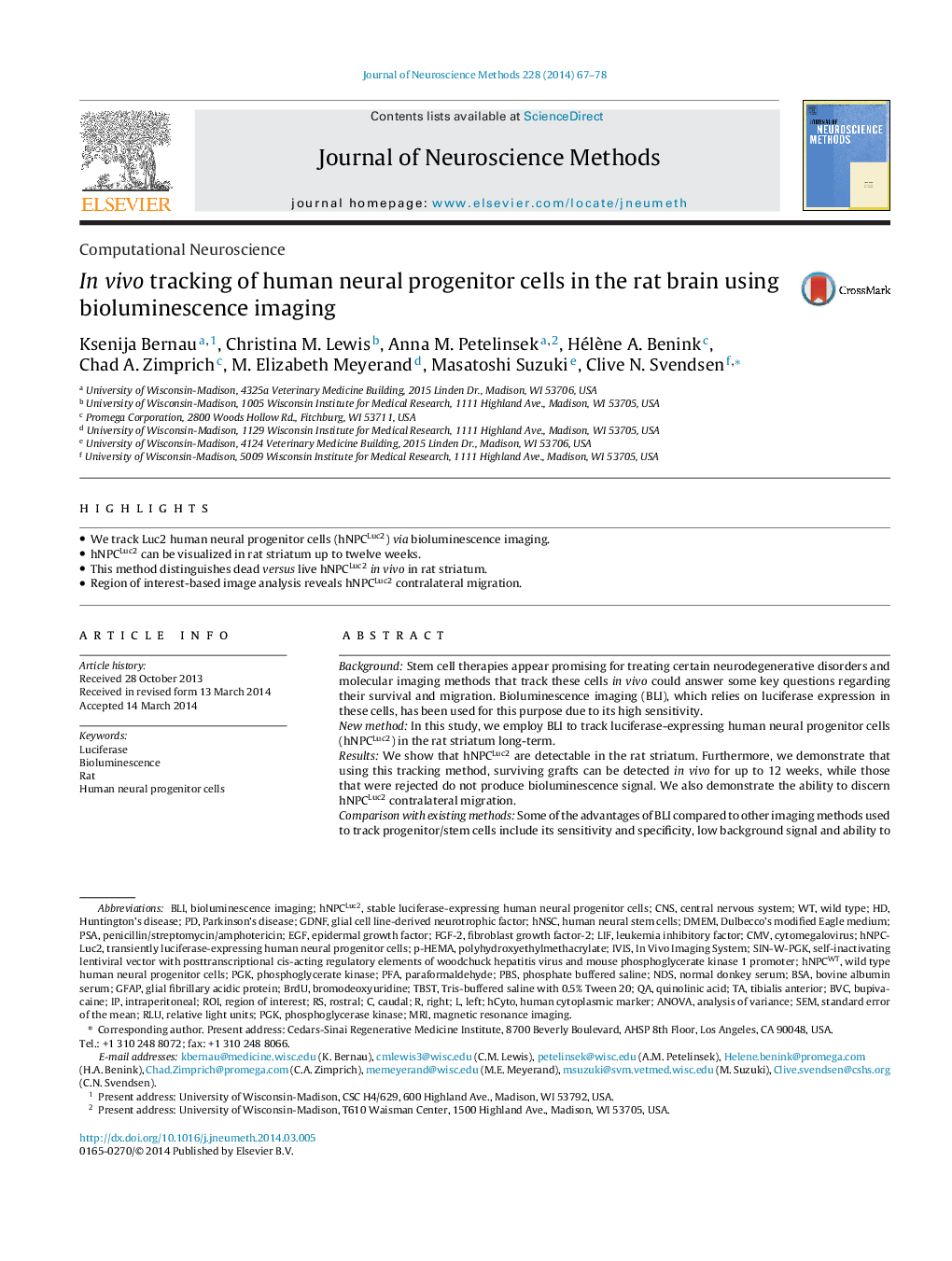| Article ID | Journal | Published Year | Pages | File Type |
|---|---|---|---|---|
| 6268748 | Journal of Neuroscience Methods | 2014 | 12 Pages |
â¢We track Luc2 human neural progenitor cells (hNPCLuc2) via bioluminescence imaging.â¢hNPCLuc2 can be visualized in rat striatum up to twelve weeks.â¢This method distinguishes dead versus live hNPCLuc2in vivo in rat striatum.â¢Region of interest-based image analysis reveals hNPCLuc2 contralateral migration.
BackgroundStem cell therapies appear promising for treating certain neurodegenerative disorders and molecular imaging methods that track these cells in vivo could answer some key questions regarding their survival and migration. Bioluminescence imaging (BLI), which relies on luciferase expression in these cells, has been used for this purpose due to its high sensitivity.New methodIn this study, we employ BLI to track luciferase-expressing human neural progenitor cells (hNPCLuc2) in the rat striatum long-term.ResultsWe show that hNPCLuc2 are detectable in the rat striatum. Furthermore, we demonstrate that using this tracking method, surviving grafts can be detected in vivo for up to 12 weeks, while those that were rejected do not produce bioluminescence signal. We also demonstrate the ability to discern hNPCLuc2 contralateral migration.Comparison with existing methodsSome of the advantages of BLI compared to other imaging methods used to track progenitor/stem cells include its sensitivity and specificity, low background signal and ability to distinguish surviving grafts from rejected ones over the long term while the blood-brain barrier remains intact.ConclusionsThese new findings may be useful in future preclinical applications developing cell-based treatments for neurodegenerative disorders.
